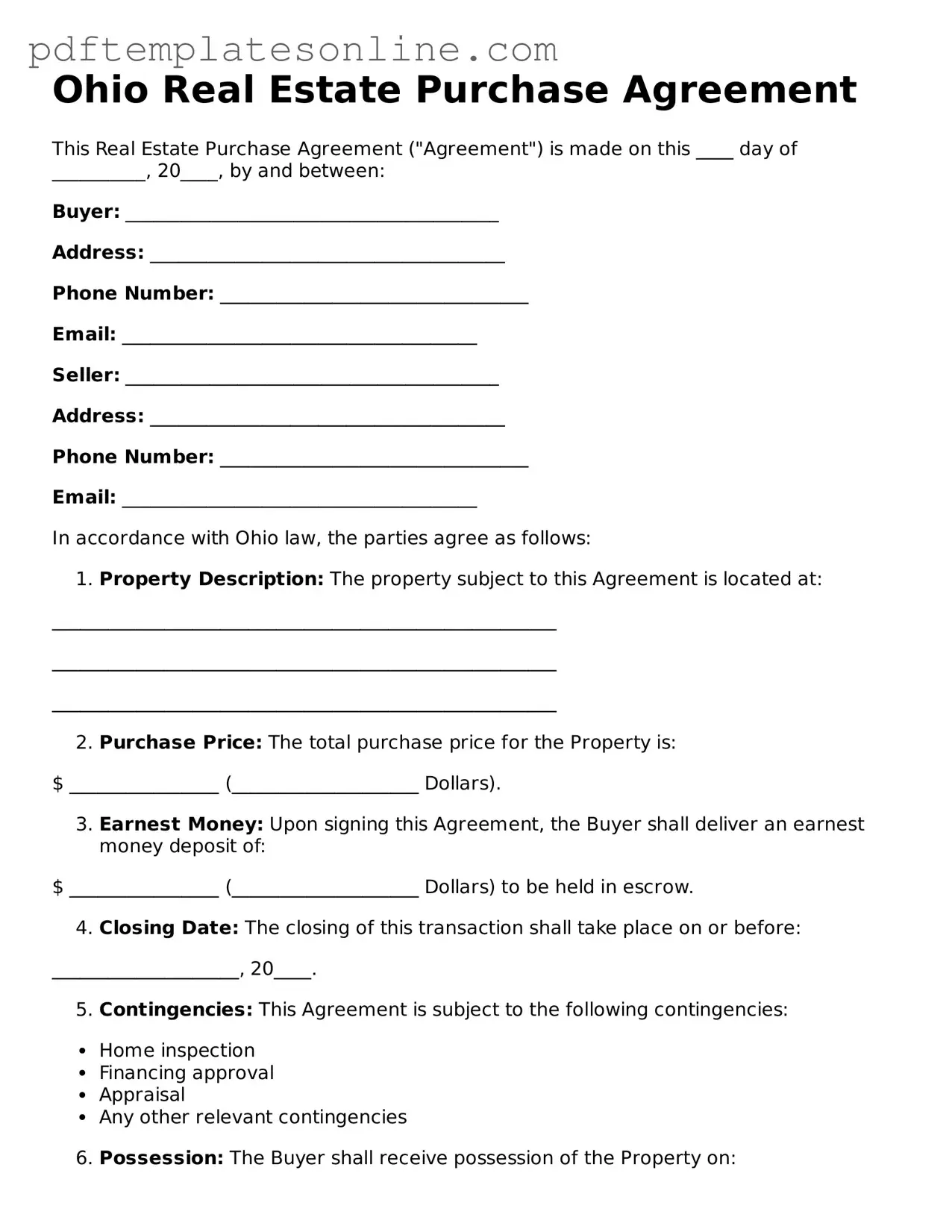Official Ohio Real Estate Purchase Agreement Document
The Ohio Real Estate Purchase Agreement is a legal document that outlines the terms and conditions under which a buyer agrees to purchase property from a seller. This form serves as a crucial tool in real estate transactions, ensuring that both parties have a clear understanding of their rights and obligations. By detailing aspects such as the purchase price, closing date, and contingencies, the agreement helps facilitate a smooth transfer of ownership.
Access Real Estate Purchase Agreement Editor Now
